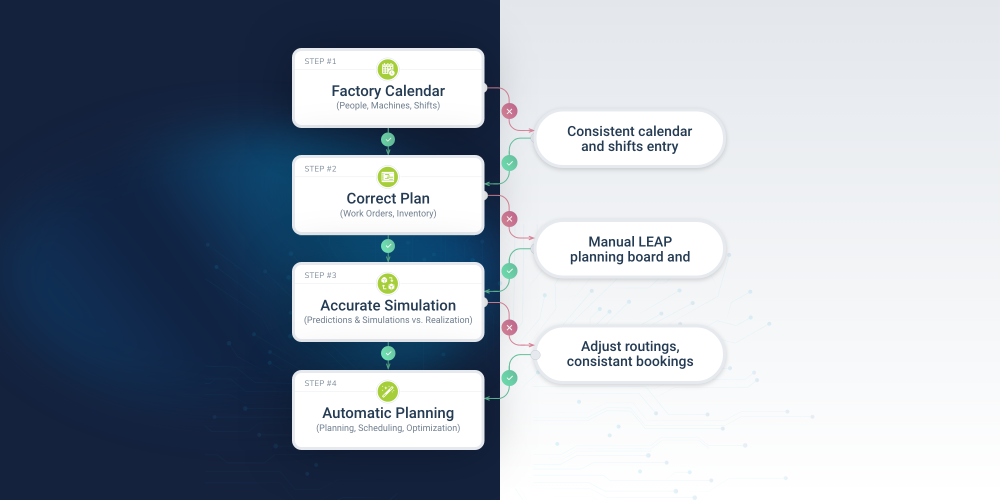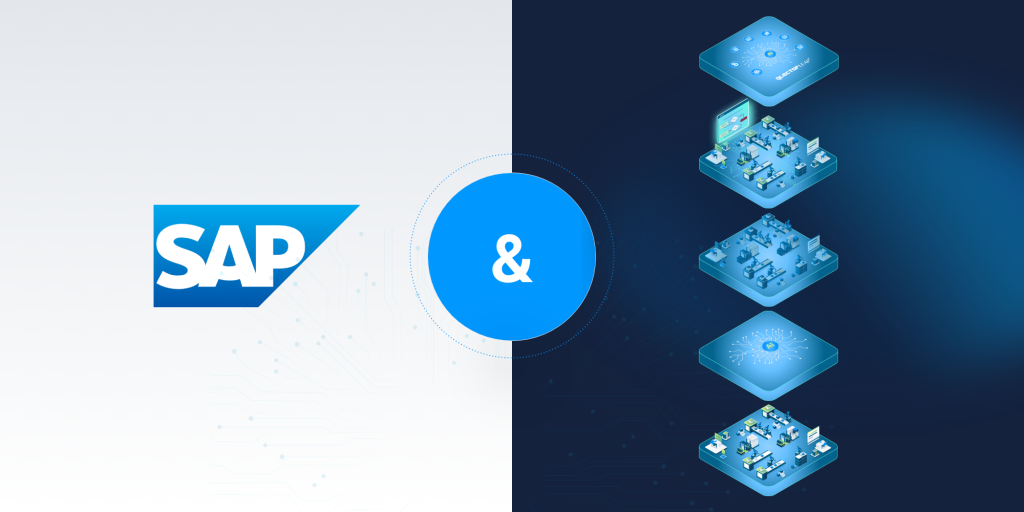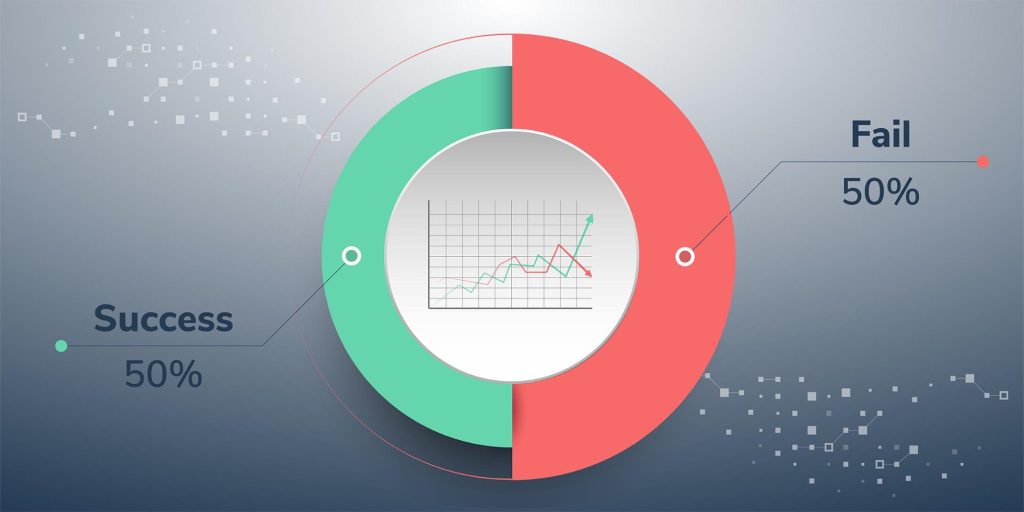How quickly you can introduce artificial intelligence (AI) into production planning depends on the company’s digital maturity and data culture. In our experience, the entire process involves four main steps: an organized factory calendar, a correct plan, accurate simulations, and finally, the holy grail of any manufacturing company – automated production planning and scheduling.
Based on our rich experience in CEE and the DACH region with the implementation of operational AI and digital twins, we should emphasize that their introduction is not a piece of cake. It requires a certain level of digital maturity and a corresponding data culture in the company, as well as changes in organizational processes if they are not designed to ensure optimal workflow.
The last 10% remains for people
To provide guidance and assistance in this process, we have compiled a list of all the necessary steps that will lead you to automated production planning. Practice shows that even when implementing AI solutions, the last 10% will probably always be left to humans. They know the dynamics of the company’s current needs and decisions and bring a business context to planning that is not captured and visible in IT systems.
Small victories for motivation
The implementation process is designed to gradually build users’ digital competencies, increase trust in AI, and motivate users with small victories in the process. This is in contrast to the traditional implementation process, which focuses on the small tasks without the big picture in mind.
Step #1 – Factory calendar
The factory calendar represents the basic framework of a factory on which we build a digital twin and is the foundation for predictions based on data from MES and ERP systems. So the first necessary step is to have an orderly factory calendar in the ERP system that includes all shifts, machines, and people capacities. If for some reason the company does not have this, it can start managing the factory calendar in the Qlector LEAP solution.
Step #2 – Correct plan
The second step refers to the correct plan, which includes all planned work orders and stock. The work orders must be organized to reflect the actual situation on the shop floor. Similar to the factory calendar, companies can use the Qlector LEAP solution instead of ERP for this step. With our manual planning board feature, planners can simply edit the plan by dragging & drop work and planned orders and write changes back to ERP. A prepared plan is automatically passed to a shift leader to organize people and dispatch shifts on the shop floor.
Step #3 – Accurate simulation
Once the plan is prepared, we can begin production simulations and predictions. It is important that the predictions are realistic and that we can verify them together with the users – whether what we predicted actually happened. We guide users through the process of building trust in AI and predictions. We empower them with a systematic comparison of predictions and realization.
Automatic maintenance of master data by digital twin
In this step, the AI is already building a digital twin of the entire factory. If we compare the old way with the new way, we can see that a lot of time and energy is now saved because AI takes care of the master data. Namely, the digital twin learns what is the realistic time for tool change/cleaning, the real-time work order start, and end, what the real downtime or scrap is, etc.
Before the implementation of AI, master data maintenance was a repetitive and manual task that took a lot of resources and was not done often enough. At the same time, all production processes depend on them, so their quality and availability are important success factors.
Step #4 – Automatic planning
Now that we made sure that production times are correct, we have actually validated the digital twin of the factory. And so we came to the final step, automatic planning. Our experience shows that the winning combination is made of 90% artificial intelligence and the last 10% is still in the hands of humans, who can take into account current business needs and decisions and simply drag & drop a specific work order.
OEE that is at least 5% higher!
If we follow the described steps of digital maturity and the gradual introduction of AI into production planning and scheduling, we can ultimately reduce the number of planners by half, achieve an OEE that is at least 5% higher, and significantly reduce stock levels.
From end product to raw material
In doing so, we follow the “pull” principle – from end product to raw material. For any manufacturing company, it is crucial to achieving a delivery accuracy of at least 95%. So the end product we have to deliver to the customer is the best starting point.
Are you interested in what kind of value an operational use of AI can bring to your company?
Book your FREE 15-Minute consultation!












